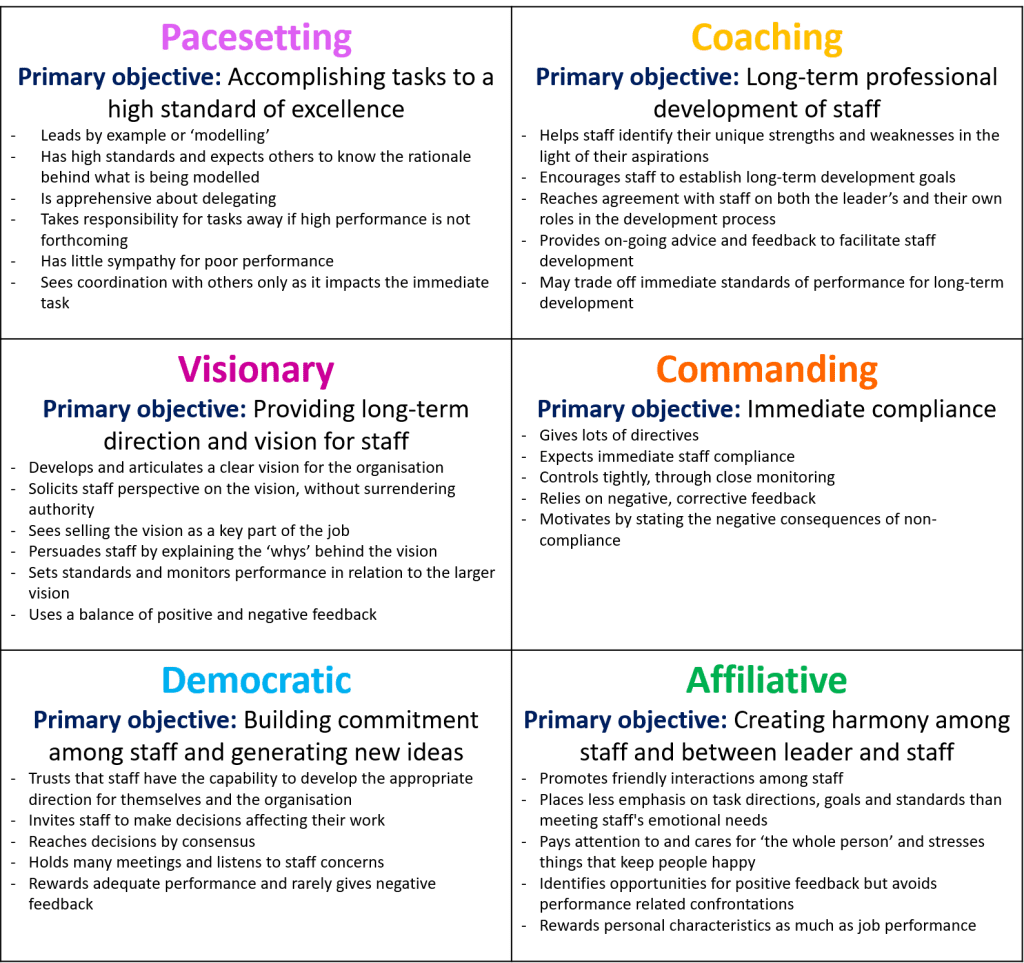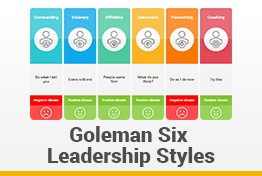According to Daniel Goleman there are six styles of leadership, extracted from a research done on 3,871 executives.
The research didn’t just try to define the styles, it also correlated each one of them with the effect they have on the company climate, which then has a direct correlation on results.
- Visionary — mobilize people toward a vision.
Works best when a clear direction or change is needed.
Most positive climate. - Coaching — develop people for the future.
Works best when helping people and building long-term strength.
Positive climate. - Affiliative — create emotional bonds and harmony.
Works best to heal rifts in teams or motivate people in stressful times.
Positive climate. - Democratic — build consensus through participation.
Works best to create consensus or get input.
Positive climate. - Pacesetting — expect excellence and self-direction.
Works best to get quick results from a highly competent team.
Negative climate. - Commanding — demand immediate compliance.
Works best in crisis or with problematic people.
Negative climate.
The most important aspect of this breakdown is that since each style fits a different situation, a good leader needs to be able to switch them when the context requires that. A leadership style is thus a tool, not personality trait.

Leaders who have mastered four or more—especially the authoritative, democratic, affiliative, and coaching styles—have the very best climate and business performance.
Note also that the four suggested ones exclude both commanding and pacesetting, exactly for their negative effect on the company climate.

Here’s a roundup of six of our favorite leadership styles along with the strengths, weaknesses of each and examples of leaders who adopted the style. Transformational Leadership. The Six Leadership Styles (Goleman) Commanding Visionary Affiliate Democratic Pacesetting Coaching The leader's modus operandi Demands immediate compliance Mobilizes people towards a vision Create harmony and builds emotional bonds Forges consensus through participation Sets high standards for performance Develops people for the future.
On top of that, it’s important to note that all these styles relate in one for or another to emotional intelligence. And specifically it has been correlated to performance in the same study:
Executives who lacked emotional intelligence were rarely rated as outstanding in their annual performance reviews, and their divisions underperformed by an average of almost 20%.
Effective Leadership Styles
If you want to learn more:


Six Leadership Styles
- D. Goleman (2000) Leadership That Gets Results (PDF)
- D. Goleman (2013) Primal Leadership